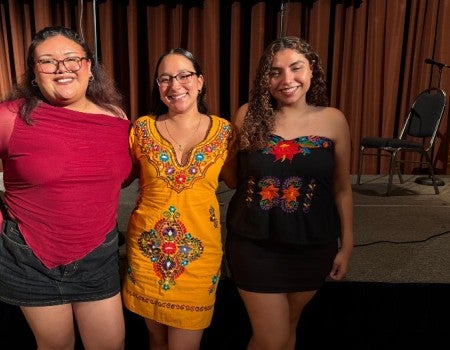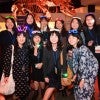

An upcoming event from Rice University’s Baker Institute for Public Policy will examine how the key to fighting climate change lies in the developing world.

The Rice Owls defeated Charlotte 28-17 in its American Conference opener on Thursday night....

For decades, researchers believed that Homo habilis — the earliest known species in our genus — marked the moment humans rose from prey to predators, ...

Researchers led by Rice’s Yong Lin Kong have developed a soft but strong metamaterial that can be controlled remotely to rapidly transform its size an...

Rice scientists’ custom, large-scale neurorecording array sheds light on how the brain keeps the world looking familiar. ...

The Shepherd School of Music’s newest faculty members are already making their mark on Houston’s vibrant arts scene. ...

Rice's César A. Uribe is developing computational tools to help scientists better understand ecosystems with recent studies using AI to glean new insi...

Rice’s Grand Hall was filled with students, music and festivities Sept. 15 as the university began its many celebrations as part of Hispanic Heritage ...

New research using NASA’s Perseverance rover has uncovered strong evidence that Mars’ Jezero Crater experienced multiple episodes of fluid activity — ...

For the first time since the 2021 season, the Rice soccer team is nationally ranked in the United Soccer Coaches Top 25 Poll, earning the 25th spot in...

With the 2025–26 academic year underway, Rice is taking bold steps to harness the transformative potential of artificial intelligence in teaching, res...

Rice’s football team will open American Conference play under the Thursday night lights this week, traveling to face the University of North Carolina ...

Rice senior safety Plae Wyatt is one of 22 college football players and one head coach who have been named to the 2025 Allstate AFCA Good Works Team®,...

An upcoming event from Rice University’s Baker Institute for Public Policy will examine how the key to fighting climate change lies in the developing world.

People, papers and presentations for March 6, 2023
Ed Emmett, Baker Institute Fellow in Energy and Transportation Policy, and Ruth Simmons, who was recently named a Rice President’s Distinguished Fellow, were named Houston Independent School District (HISD) Centennial Alumni Impact honorees at HISD’s State of the Schools event March 3.

Rodeo roundup with Reggie and Paula
Rice Owls dusted off their Stetsons and cowboy boots and dressed in their Western best to celebrate Rice Night at the Rodeo March 5.

On Feb. 24 and 25, Rice University composition professor Anthony Brandt collaborated with University of Houston professor Jose Luis Contreras-Vidal and Performing Arts Houston to premiere his newly commissioned chamber piece “Diabelli 200” at the Wortham Center.

An interactive sculpture paying tribute to African American history and the ongoing struggle for racial justice will be on display at Rice University throughout the month of March.

Owls pick up top 25 win in Shriners Children's College Classic
A Jack Riedel home run was the deciding factor in Rice’s 3-2 victory over No. 24-ranked Texas Tech University in the opening game of the Shriners Children's College Classic March 3 at Minute Maid Park.

Migrant caravan coverage contributes to poor immigration policy, says Baker Institute report
Both punitive and permissive immigration policies have done little to deter migrants from crossing the U.S. border, and media coverage of “migrant caravans” has contributed to stopgap policies, according to a new report from Rice University’s Baker Institute for Public Policy.

Taking care of your teeth could help prevent chronic joint pain
Rice scientist spots clue in discarded data that sets research on the right track.

Bending 2D nanomaterial could ‘switch on’ future technologies
Rice University materials scientist Boris Yakobson and collaborators uncovered a property of ferroelectric 2D materials that could be exploited in future devices.

Rice U. hosts international women’s STEM research program
Rice University is host to a women’s leadership and STEM research program that welcomes students from Japan and Taiwan for an immersive five-week internship.